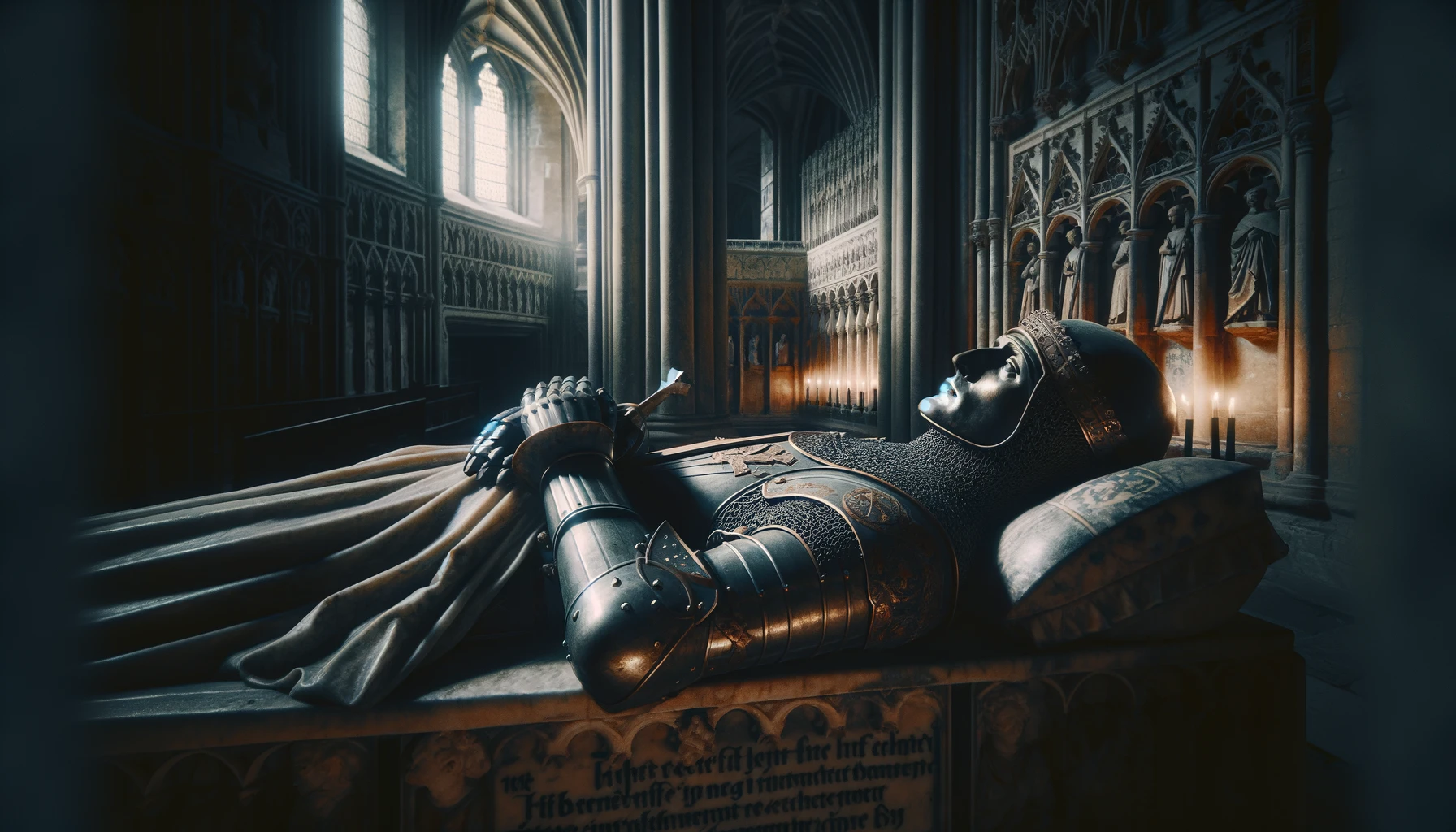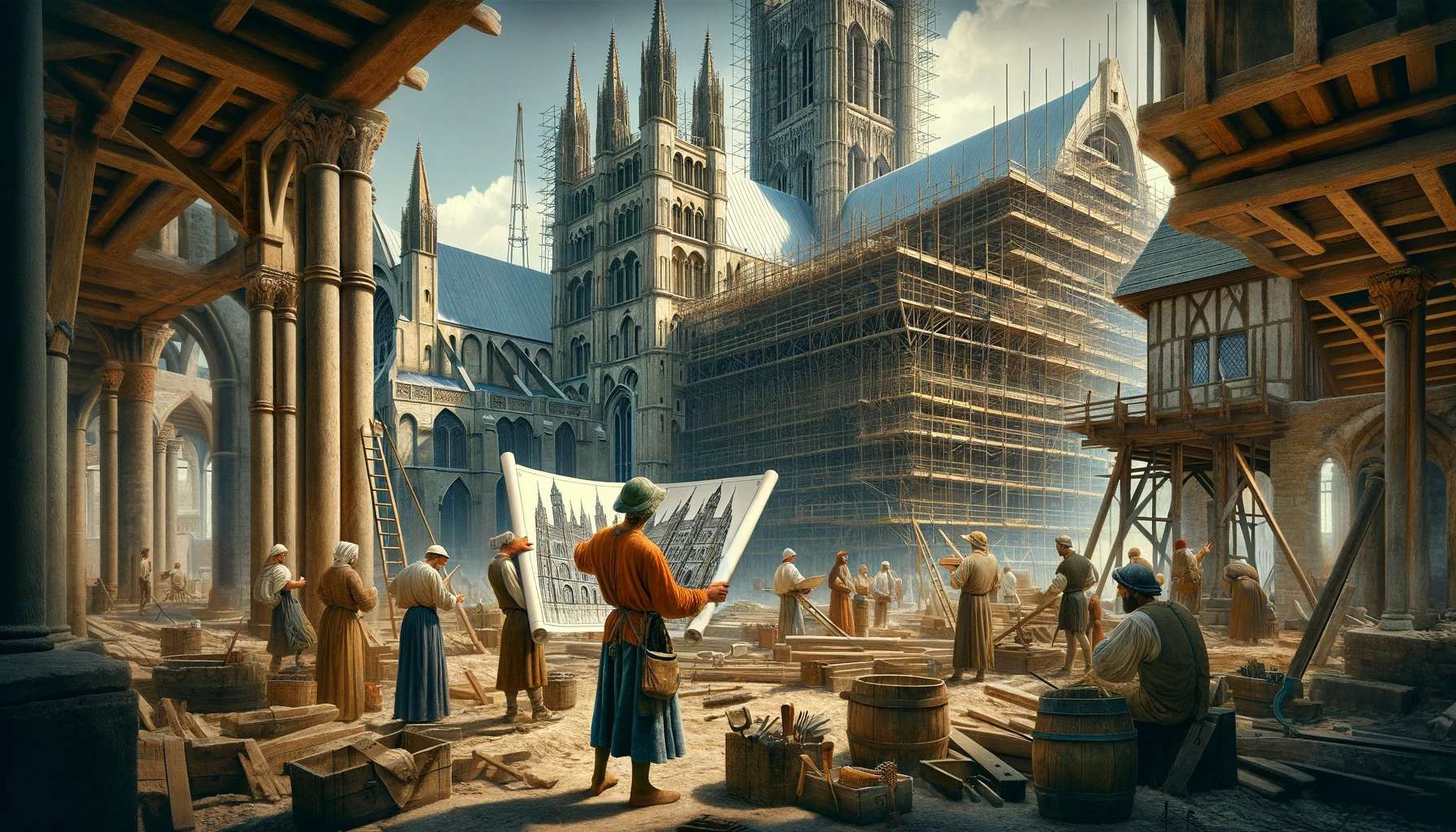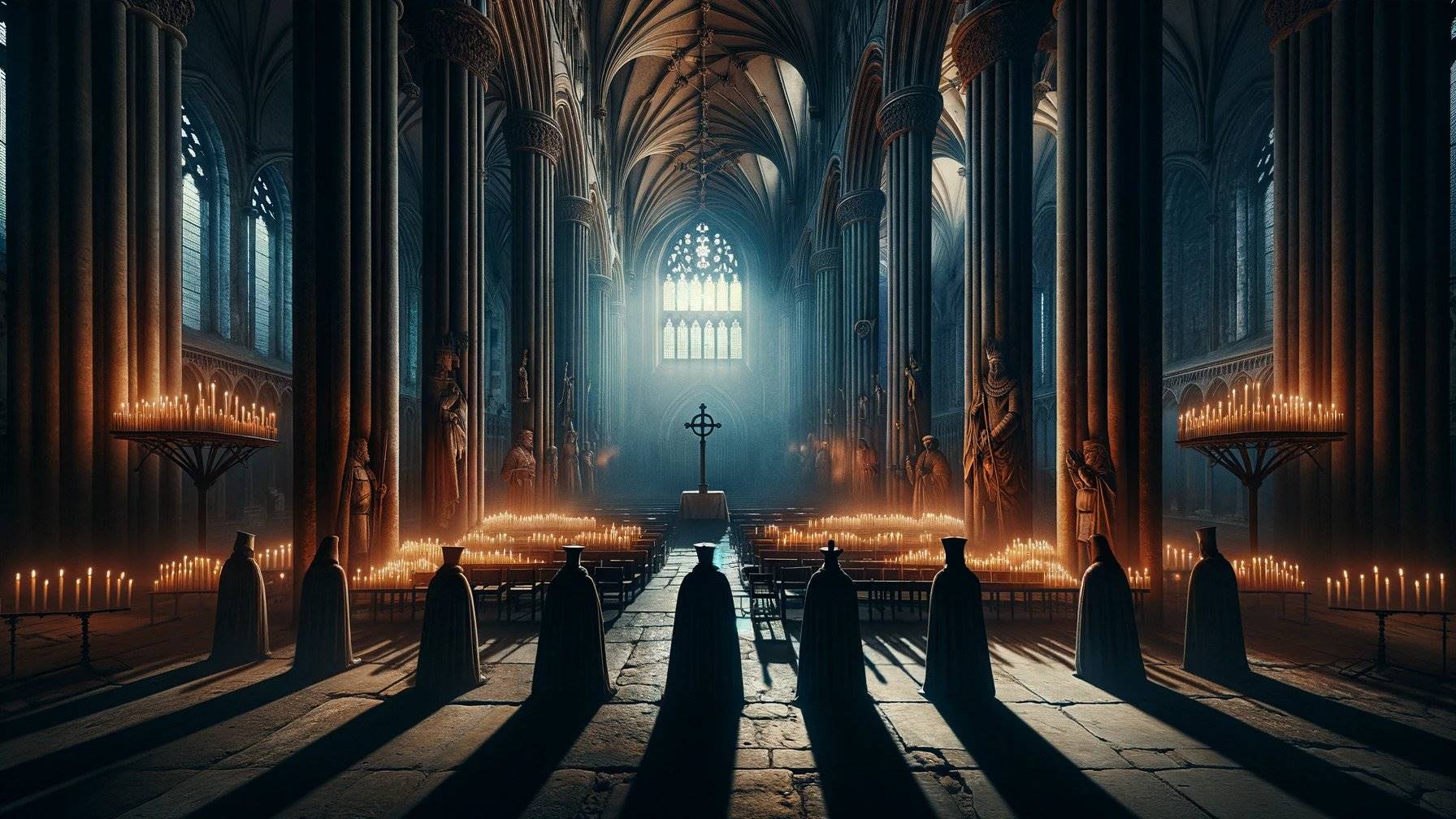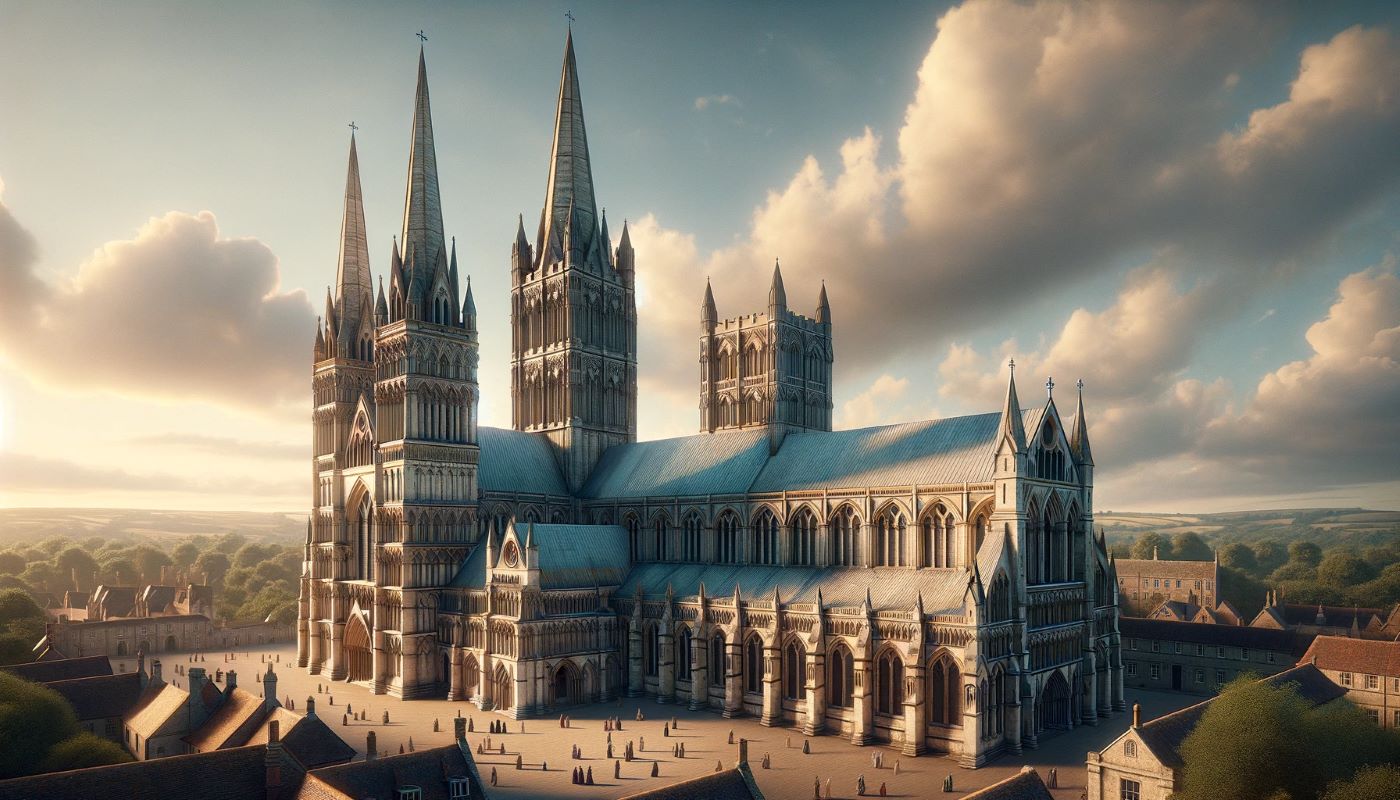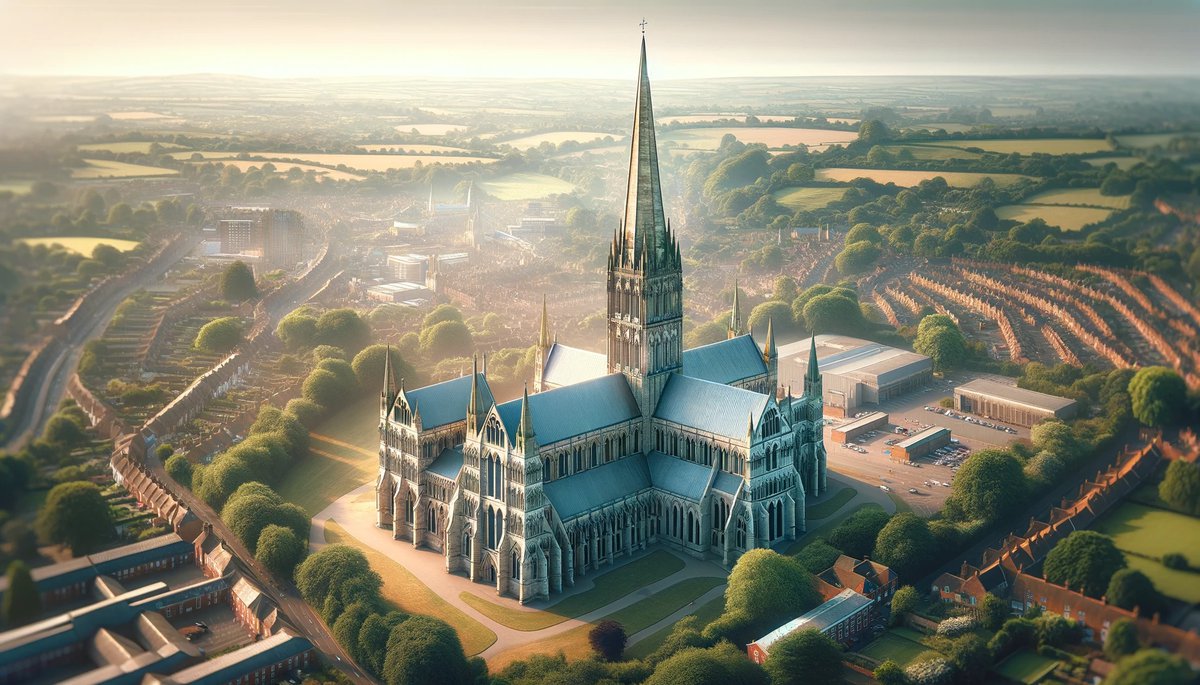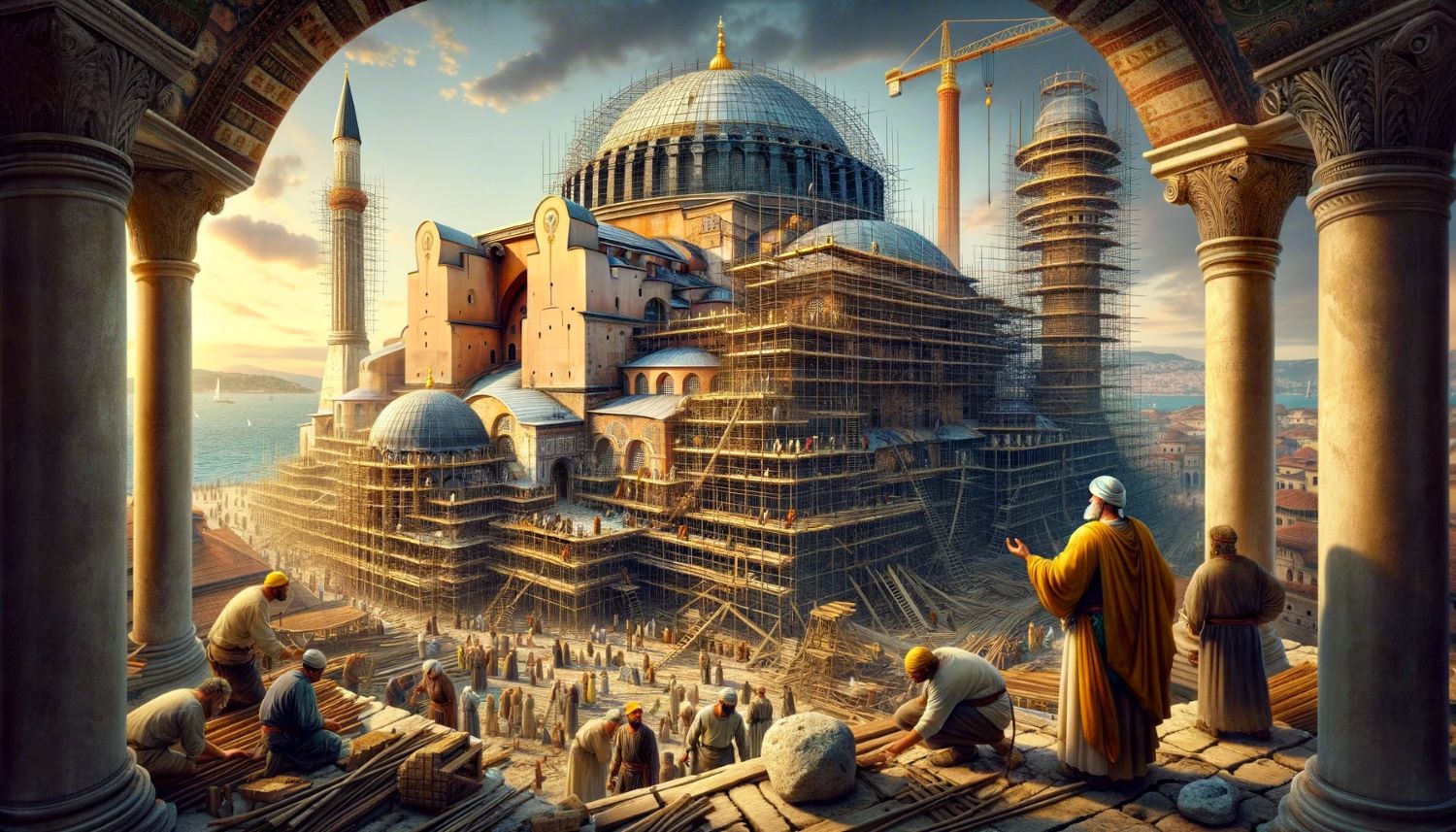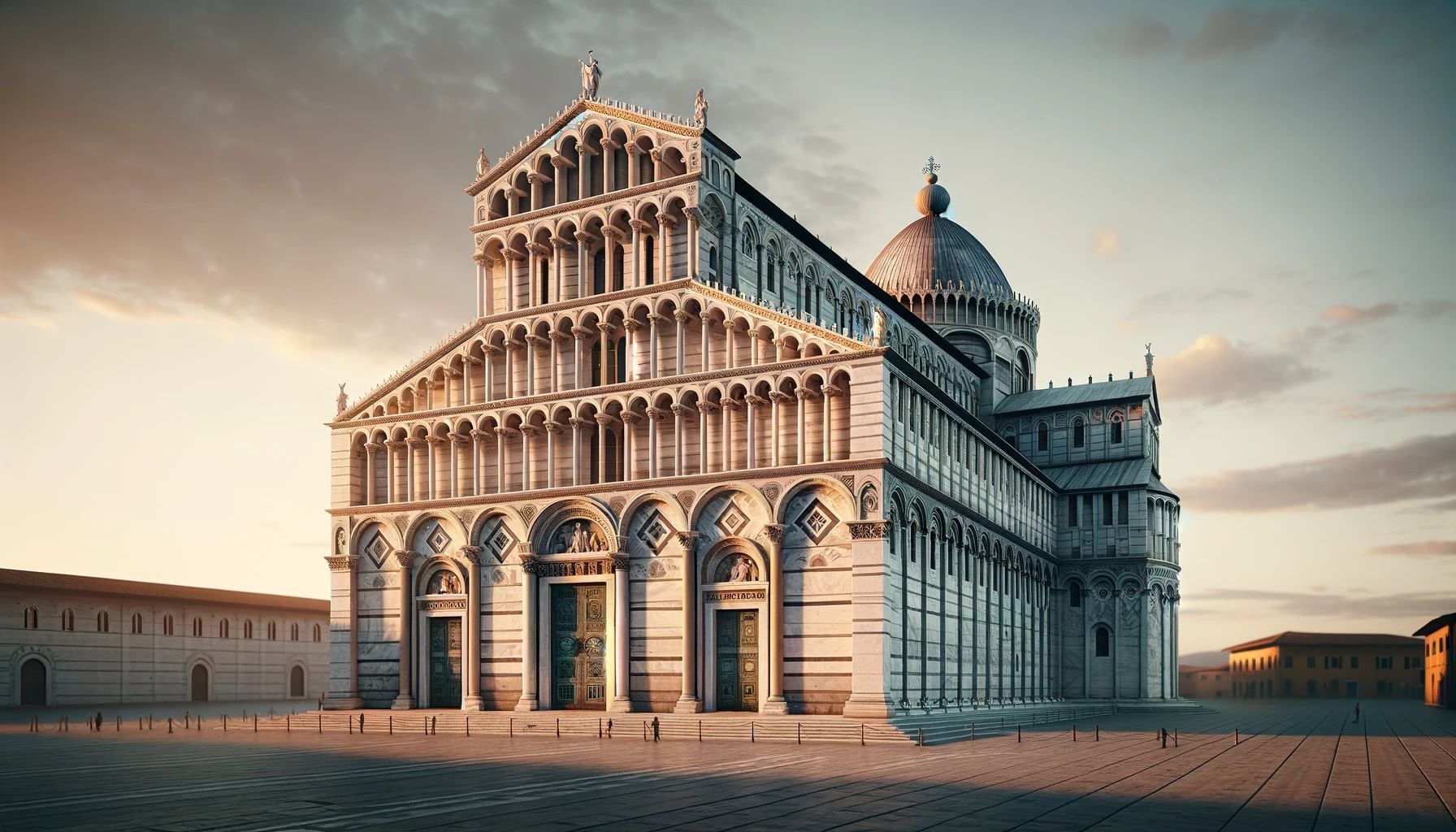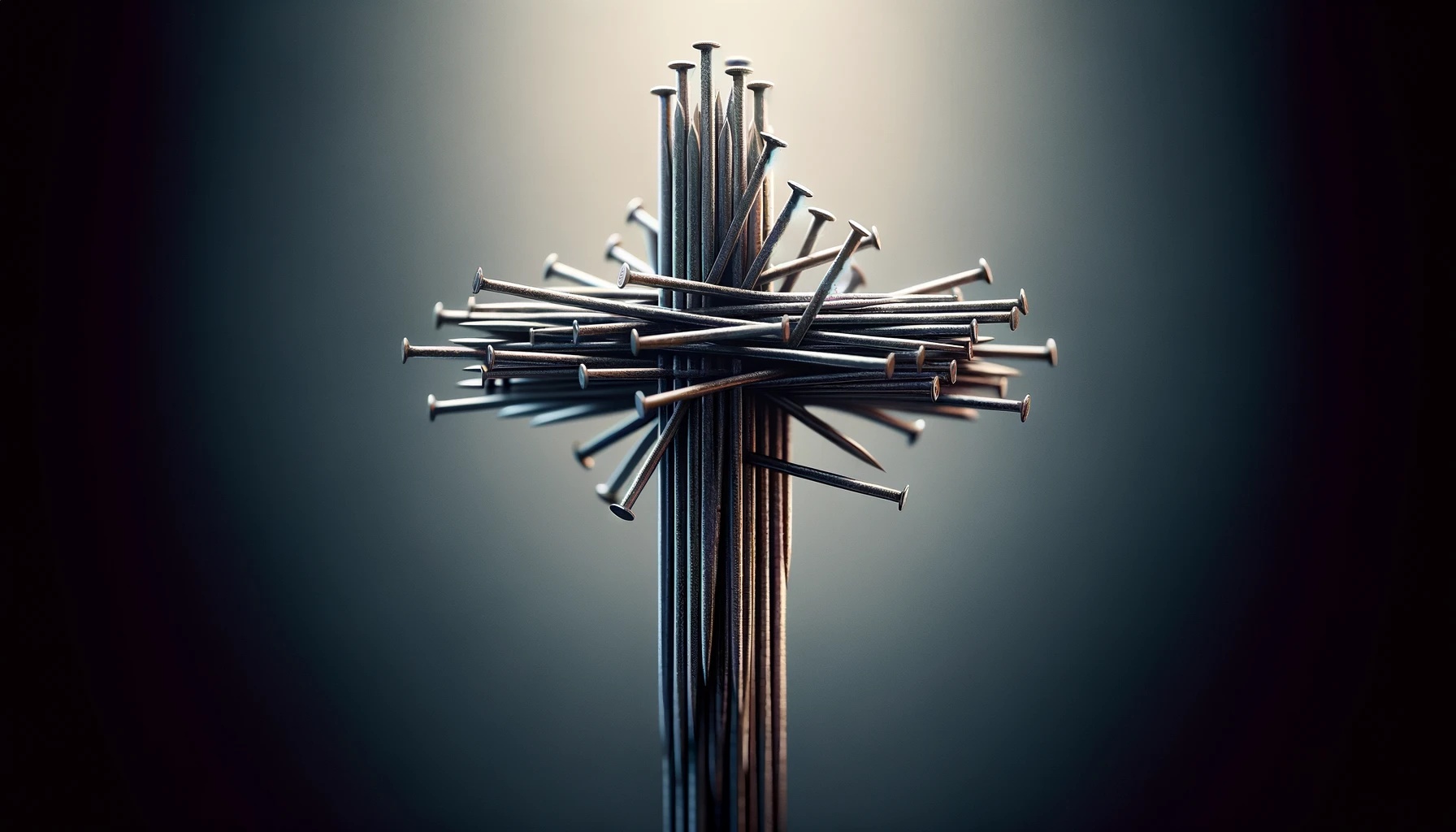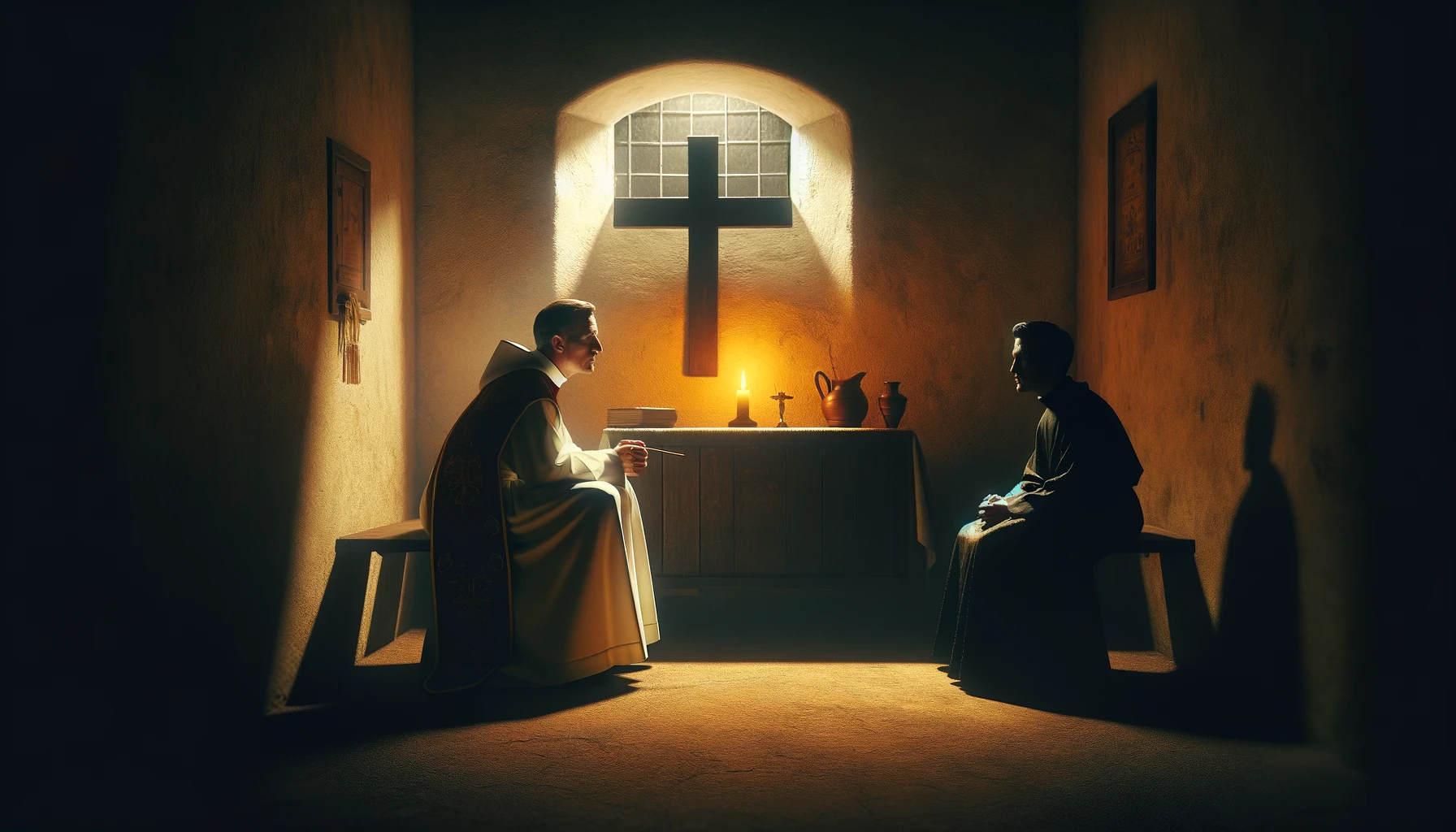Home>Arts and Culture>Which Archbishop Was Murdered In Canterbury Cathedral


Arts and Culture
Which Archbishop Was Murdered In Canterbury Cathedral
Published: February 16, 2024
Ericka Andersen, an editor at Christian.net, expertly merges digital strategy with content creation, focusing on faith and societal issues. Her communication skills enhance the platform's engaging narratives, fostering meaningful dialogue on belief's impact on society.
Discover the shocking history of the murder of Archbishop Thomas Becket in Canterbury Cathedral, a pivotal event in arts and culture. Explore the impact of this tragic event on medieval society and the church.
(Many of the links in this article redirect to a specific reviewed product. Your purchase of these products through affiliate links helps to generate commission for Christian.net, at no extra cost. Learn more)
Table of Contents
Introduction
Canterbury Cathedral stands as a timeless testament to the rich tapestry of history, art, and spirituality. Nestled in the heart of Canterbury, Kent, England, this architectural marvel has been a site of pilgrimage, worship, and cultural significance for over a millennium. Its soaring spires and intricate stonework bear witness to the stories of kings and queens, saints and sinners, and the enduring spirit of human endeavor.
As one of the most iconic religious structures in the world, Canterbury Cathedral has been a focal point of Christian worship and a symbol of architectural grandeur. Its history is intertwined with the very fabric of England's past, reflecting the ebbs and flows of power, faith, and artistic expression. From its humble beginnings as a Saxon church to its current status as a UNESCO World Heritage Site, the cathedral has stood as a guardian of tradition and a beacon of spiritual contemplation.
This hallowed ground has witnessed the rise and fall of empires, the echoes of choral music reverberating through its sacred halls, and the footsteps of countless pilgrims seeking solace and enlightenment. Each stone, each stained glass window, and each whispering arch holds within it the collective memory of generations past, inviting visitors to immerse themselves in a living chronicle of human experience.
In the shadow of its majestic spires, the cathedral has borne witness to both triumph and tragedy, none more poignant than the fateful events surrounding the murder of Archbishop Thomas Becket. This pivotal moment in history not only shook the foundations of the church but also left an indelible mark on the collective consciousness of the medieval world.
As we delve into the annals of Canterbury Cathedral's storied past, we embark on a journey through time, exploring the intersection of faith, power, and the enduring legacy of one of the most revered figures in Christian history. Join us as we unravel the captivating tale of Archbishop Thomas Becket and the profound impact of his life and untimely death within the hallowed walls of this architectural masterpiece.
Read more: Where Is Canterbury Cathedral
History of Canterbury Cathedral
Canterbury Cathedral, with its roots tracing back to the early Christianization of England, stands as a testament to the enduring legacy of faith and architectural prowess. The cathedral's origins can be traced to the 6th century when St. Augustine, the "Apostle to the English," established his seat (or "cathedra") in Canterbury. This marked the birth of the Canterbury diocese and laid the foundation for the cathedral's future prominence.
The cathedral's early history is intertwined with the tumultuous events of the medieval period, as it underwent numerous transformations and expansions. The original Saxon cathedral, built by King Ethelbert of Kent, was succeeded by the grandeur of the Norman cathedral, constructed under the direction of Archbishop Lanfranc in the 11th century. This architectural marvel, with its Romanesque design and towering spires, solidified Canterbury Cathedral's status as a beacon of ecclesiastical authority and artistic innovation.
Throughout the centuries, the cathedral continued to evolve, incorporating elements of Gothic architecture and undergoing extensive renovations. The stunning stained glass windows, intricate carvings, and majestic nave bear witness to the craftsmanship and devotion of countless artisans and builders who contributed to its enduring splendor.
The cathedral's significance transcends its architectural magnificence, as it became a site of pilgrimage and veneration. The martyrdom of Archbishop Thomas Becket in 1170 elevated Canterbury Cathedral to a place of profound spiritual reverence, attracting pilgrims from far and wide. The Canterbury Tales, penned by Geoffrey Chaucer in the 14th century, further immortalized the cathedral as a symbol of pilgrimage and storytelling.
In 1174, a devastating fire ravaged the cathedral, leading to extensive reconstruction and the incorporation of Gothic elements, including the breathtaking "Bell Harry" tower. The cathedral's resilience in the face of adversity reflects the unwavering spirit of those who sought to preserve its sanctity and grandeur.
Today, Canterbury Cathedral stands as a living testament to the enduring legacy of faith, artistry, and historical significance. Its status as a UNESCO World Heritage Site underscores its universal importance as a cultural and spiritual treasure, inviting visitors to immerse themselves in the timeless narrative of England's religious and architectural heritage. As the sun sets over its weathered stones and the echoes of evensong fill the air, Canterbury Cathedral continues to inspire awe and reverence, beckoning all who enter to partake in its timeless tale of faith and human endeavor.
The Murder of Archbishop Thomas Becket
The murder of Archbishop Thomas Becket stands as a defining moment in the annals of Canterbury Cathedral's history, etching a tragic narrative of religious conflict and political intrigue. Born into a life of privilege and influence, Thomas Becket ascended to the position of Archbishop of Canterbury in 1162, becoming a formidable figure in the ecclesiastical and secular realms of medieval England.
The seeds of discord were sown in the tumultuous relationship between Becket and King Henry II, his former close companion. As Becket fervently defended the rights and privileges of the Church against the encroachment of royal authority, tensions between the two powerful figures reached a boiling point. The clash between ecclesiastical autonomy and regal supremacy culminated in a fateful event that would reverberate through the corridors of history.
On December 29, 1170, a group of knights, purportedly goaded by King Henry II's impassioned outburst, stormed into Canterbury Cathedral with the intent to confront Becket. The air crackled with tension as the echoes of their heavy footsteps reverberated through the sacred halls. In a chilling display of violence, the knights confronted Becket at the altar, demanding that he submit to the king's will. Refusing to yield, Becket stood resolute in his defense of the Church's independence, invoking the wrath of his assailants.
The brutal and merciless murder of Archbishop Thomas Becket within the hallowed confines of the cathedral sent shockwaves across Europe, eliciting both condemnation and reverence. The blood-stained stones bore witness to the sacrilege committed in the name of power and ideology, forever altering the course of England's religious and political landscape.
The martyrdom of Thomas Becket transformed him into a symbol of unwavering devotion and defiance against tyranny, inspiring fervent veneration and pilgrimage to Canterbury Cathedral. His martyrdom became a catalyst for the assertion of ecclesiastical authority and the sanctity of conscience, leaving an indelible mark on the collective consciousness of the medieval world.
The haunting echoes of Becket's final moments continue to resonate within the sacred precincts of Canterbury Cathedral, serving as a poignant reminder of the enduring struggle for spiritual autonomy and the enduring legacy of a man who dared to defy the forces of oppression.
Aftermath of the Murder
The brutal slaying of Archbishop Thomas Becket within the hallowed confines of Canterbury Cathedral sent shockwaves across medieval Europe, leaving a profound and far-reaching aftermath that reverberated through the corridors of power, faith, and public sentiment.
In the immediate aftermath of the murder, a palpable sense of outrage and disbelief swept through the populace, both within England and beyond. The desecration of a revered religious figure within the sacred precincts of the cathedral struck at the very heart of the Christian community, eliciting a groundswell of condemnation and mourning. The blood-stained altar and the shattered sanctity of the cathedral stood as a stark testament to the brutality of the act, igniting a fervent outcry for justice and retribution.
The repercussions of Becket's murder were felt not only within the ecclesiastical sphere but also in the corridors of secular power. King Henry II, who had been embroiled in a contentious struggle with Becket, found himself confronted with the international condemnation and the specter of excommunication. The rift between the church and the crown deepened, casting a shadow of instability over the realm and underscoring the enduring influence of religious authority in shaping the political landscape.
The martyrdom of Thomas Becket galvanized public sentiment, transforming him into a revered symbol of resistance against tyranny and a champion of ecclesiastical independence. Pilgrims from all walks of life embarked on journeys to Canterbury Cathedral, venerating Becket as a martyr and seeking solace in the sanctity of his memory. The cult of St. Thomas Becket grew in prominence, drawing throngs of devotees who sought spiritual succor and a connection to the legacy of the slain archbishop.
The aftermath of Becket's murder also reverberated through the annals of literary and artistic expression. His martyrdom inspired a rich tapestry of hagiographic accounts, illuminating his steadfast devotion and the enduring resonance of his defiance. The Canterbury Tales, penned by Geoffrey Chaucer, immortalized the pilgrimage to Canterbury Cathedral, weaving a vivid tapestry of human experience and spiritual quest.
The legacy of Archbishop Thomas Becket's murder endures as a testament to the enduring power of conviction and the indomitable spirit of those who dare to defy oppression. Within the sacred precincts of Canterbury Cathedral, the echoes of his martyrdom continue to resonate, inviting contemplation and reverence for a man whose legacy transcends the boundaries of time and space.
Legacy of Archbishop Thomas Becket
The legacy of Archbishop Thomas Becket transcends the confines of history, resonating as a timeless testament to the enduring power of conviction and the indomitable spirit of those who dare to defy oppression. The echoes of his martyrdom continue to reverberate within the sacred precincts of Canterbury Cathedral, inviting contemplation and reverence for a man whose legacy transcends the boundaries of time and space.
Thomas Becket's martyrdom transformed him into a symbol of unwavering devotion and defiance against tyranny, inspiring fervent veneration and pilgrimage to Canterbury Cathedral. His unwavering commitment to upholding the autonomy of the Church and the sanctity of conscience elevated him to the status of a revered martyr, drawing throngs of devotees who sought solace in the sanctity of his memory.
The cult of St. Thomas Becket grew in prominence, attracting pilgrims from all walks of life who embarked on journeys to Canterbury Cathedral to pay homage to the slain archbishop. The profound impact of Becket's martyrdom is immortalized in the rich tapestry of hagiographic accounts and artistic expression, serving as a source of inspiration for countless works of literature, music, and visual art.
The enduring resonance of Becket's defiance against the forces of oppression is encapsulated in the words of T.S. Eliot, who famously wrote, "Where the world has broken in, and a few stony Britons stubbornly stood, defying the course of history." These words encapsulate the enduring legacy of Archbishop Thomas Becket, a man who stood as a bulwark against the encroachment of tyranny and a beacon of unwavering faith.
The legacy of Thomas Becket's martyrdom extends beyond the confines of Canterbury Cathedral, permeating the collective consciousness of humanity and serving as a poignant reminder of the enduring struggle for spiritual autonomy. His steadfast commitment to upholding the principles of justice and religious freedom continues to inspire generations, underscoring the timeless relevance of his legacy in an ever-changing world.
As the sun sets over the weathered stones of Canterbury Cathedral, the legacy of Archbishop Thomas Becket endures as a testament to the enduring power of faith, resilience, and the unyielding spirit of those who dare to defy the forces of oppression. Within the hallowed precincts of the cathedral, the spirit of Becket lives on, inviting all who enter to partake in the timeless tale of a man whose legacy transcends the boundaries of mortal existence.
